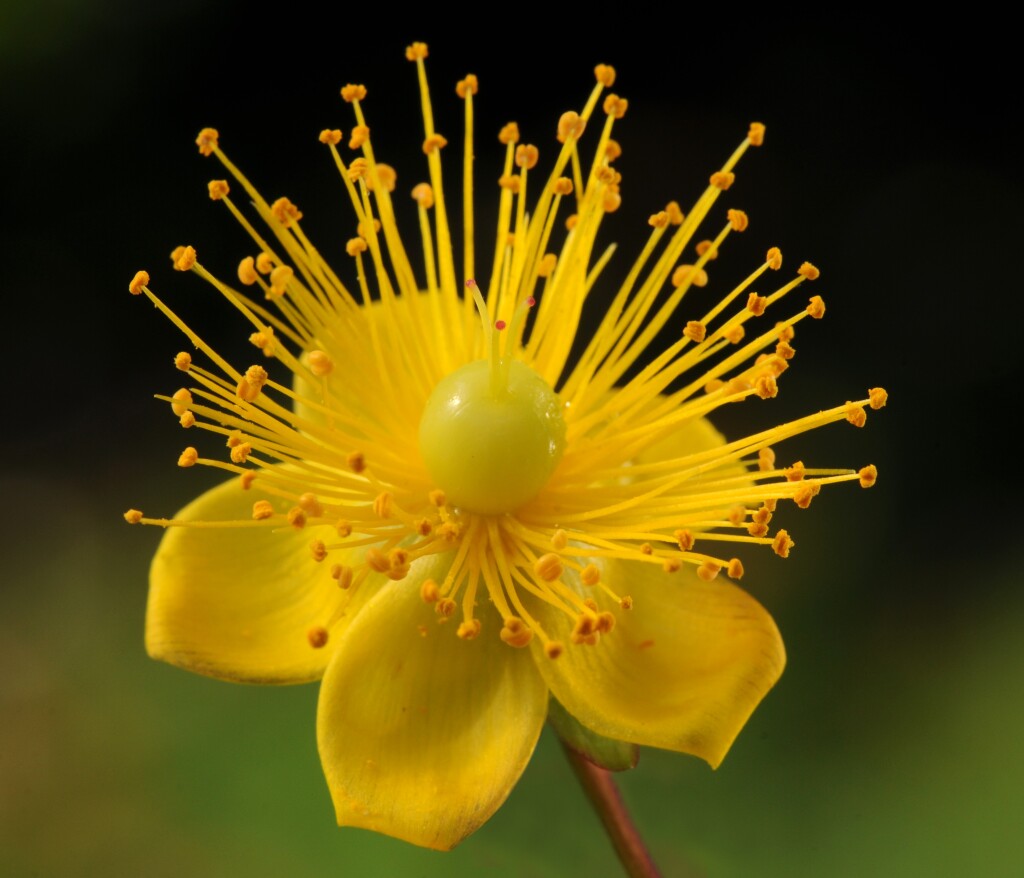Hypericum androsaemum
L. TutsanSpreading, soft-wooded shrub, to c. 80 cm high, usually curry-scented; stems indistinctly 2-ridged. Leaves broadly ovate, 4–15 cm long, 3–8 cm wide, bases usually cordate, lower surface greyish. Flowers in terminal cymes of c. 3–15; sepals unequal, ovate, 4–8 mm long, enlarging somewhat and becoming deflexed in fruit, not black-dotted; petals obovate, c. equal to largest sepal, yellow, not black-dotted; stamens numerous, united at base into 5 bundles, slightly exceeding petals; styles 3, shorter than ovary. Fruit slightly fleshy, tardily dehiscent, globular, c. 1 cm diam., purplish or black; seeds narrowly ovoid, c. 1 mm long, minutely ridged longitudinally, or reticulate. Flowers Oct.–Jan.
VVP, VRiv, GipP, OtP, WaP, CVU, DunT, EGU, HSF, HNF, OtR, Strz, VAlp. Also naturalised NSW, ACT, Tas. Native to western and southern Europe. A common weed of cool, moist forests, chiefly in disturbed sites, along roadsides and beside watercourses, but also readily extending into intact native forest.
Walsh, N.G. (1996). Clusiaceae. In: Walsh, N.G.; Entwisle, T.J., Flora of Victoria Vol. 3, Dicotyledons Winteraceae to Myrtaceae, pp. 316–321. Inkata Press, Melbourne.
 Spinning
Spinning



